#cad to bim modeling services
Explore tagged Tumblr posts
Text
CAD to BIM for Facility Management and Post-Construction Operations
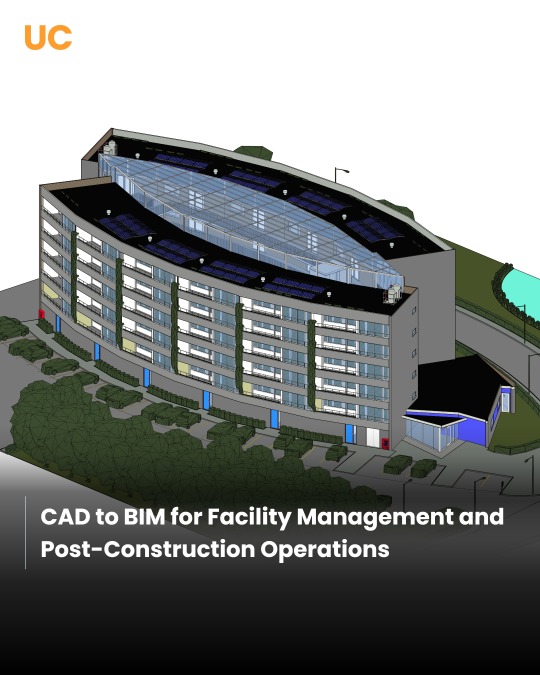
CAD to BIM for facility management and other post construction operations is a strategic approach for improving the process, safety and performance of infrastructure. Continue to know more how CAD to BIM is beneficial for facility management.
#cad to bim services#bim consulting services#cad to bim conversion#3d bim modeling#cad to bim modeling services#2d cad drawings#bim services#autocad to revit#bim consultant#bim services providers#bim consulting company
3 notes
·
View notes
Text
How Infrastructure Bim Services Can Help For Project?

Why Infrastructure Bim Services India a smart choice? These days, the construction and infrastructure landscape has been evolving fast. Due to that, it hugely recommended to reduce errors and complete the project on time.
#Bim Service Providers In India#Architectural Bim Services India#Architectural Bim India#Architectural Bim Modeling Services#Bim Landscape Architecture#Structural Bim Services India#Structural Bim Modeling Services#Bim Structural Detailing Services#Mepf Bim Modeling Services#Mepf Clash Coordination#Infrastructure Bim Services India#Infrastructure Bim Modeling Services#Construction Sequencing With 4D Bim#4D Construction Sequencing#5D Bim Cost Estimation Quantity Take-Offs#Building Information Modelling 6D#7D Bim Asset Management Company#Cad To Bim Modeling Services#Construction Documentation Services India
0 notes
Text
10 Key Factors to Consider When Choosing BIM Modeling Services for Your Project

Building Information Modeling (BIM) has become a cornerstone in modern construction and design projects. As the need for efficient project management, collaboration, and accuracy grows, selecting the right BIM modeling services is crucial for achieving a successful outcome. This guide will walk you through the key considerations to help you choose the best BIM services for your project, ensuring seamless collaboration, efficiency, and quality results.
1. Understand Your Project Requirements
The first step in selecting the right BIM services is a thorough understanding of your project’s specific requirements. Each project has unique needs, and the complexity of these requirements will determine the type of BIM services that are ideal. Here’s what you need to consider:
Project Size and Scale: Larger, complex projects may require comprehensive BIM services, including 3D, 4D, 5D, and even 6D modeling. These models integrate time, cost, and sustainability considerations.
Industry-Specific Needs: BIM applications vary across industries like architecture, construction, civil engineering, and manufacturing. Ensure that the service provider has experience in your specific sector.
Project Phase: Identify whether you need BIM modeling for early-stage design, construction, or facility management. Different services may specialize in different project phases, so choose accordingly.
2. Check the Provider’s Expertise and Experience
A BIM service provider’s level of experience is a strong indicator of their ability to deliver quality results. Ensure the provider has a strong track record in the specific type of modeling services you require. Some factors to evaluate include:
Portfolio of Past Projects: Ask for case studies or examples of previous projects similar to yours. This will give you an idea of the provider’s expertise in handling similar challenges.
Industry Certifications: Look for providers that hold relevant certifications such as ISO standards in BIM, which demonstrate adherence to high-quality service and international standards.
Technical Expertise: The right provider should be proficient in industry-leading BIM software like Autodesk Revit, Navisworks, ArchiCAD, and Tekla. Providers familiar with a wide range of tools can offer more customized solutions for your needs.
3. Evaluate the Range of BIM Services Offered
BIM is more than just 3D modeling. It involves the integration of multiple dimensions (4D, 5D, 6D) that can add value to your project. Before making a choice, ensure the service provider offers a broad range of BIM services that align with your project goals:
3D BIM Modeling: This is the core of BIM and involves creating three-dimensional representations of your project.
4D BIM (Time): Integrating time allows you to visualize the construction process over time, aiding in project scheduling and timelines.
5D BIM (Cost): This service integrates cost data, helping you manage project budgets and track expenses effectively.
6D BIM (Sustainability): Sustainability models help optimize energy efficiency and meet environmental targets.
BIM Coordination: This service ensures all disciplines—architectural, structural, MEP (Mechanical, Electrical, Plumbing)—are working together without conflicts.
A provider that offers a wide array of services will be better equipped to handle your project’s evolving needs.
4. Assess Collaboration and Communication Capabilities
Effective collaboration is at the heart of BIM, allowing all stakeholders to stay on the same page throughout the project’s lifecycle. Choose a BIM service provider that uses modern collaboration tools to ensure seamless communication. Key aspects include:
Cloud-Based Platforms: BIM 360 and similar platforms allow real-time updates, remote access, and centralization of project data. This improves transparency and facilitates collaboration among dispersed teams.
Coordination Tools: Clash detection and coordination services should be a part of the provider's offerings to avoid conflicts between various disciplines and reduce rework.
Regular Updates and Meetings: Ensure the provider is open to frequent project updates and status meetings, which helps in early problem identification and resolution.
5. Consider the Integration with Other Technologies
BIM can integrate with other cutting-edge technologies, such as artificial intelligence (AI), virtual reality (VR), and the Internet of Things (IoT). These integrations provide significant benefits like enhanced visualization, predictive analytics, and real-time monitoring.
AI-Driven Insights: Some BIM providers offer AI integrations that help with automated design processes, reducing errors and improving efficiency.
VR/AR Capabilities: Virtual and augmented reality can give stakeholders an immersive experience of the project, allowing for real-time feedback during the design phase.
IoT Integration: IoT devices linked with BIM models enable real-time monitoring and management of a building post-construction.
Choosing a BIM service provider with access to these advanced technologies can give your project a competitive edge and improve overall project outcomes.
6. Evaluate Data Security and Privacy Protocols
Given the sensitive nature of construction projects, including financial data, design specifics, and timelines, it’s essential to select a BIM provider that has robust data security protocols in place. Some key areas to evaluate:
Compliance with Standards: Ensure the provider adheres to industry data security standards such as ISO/IEC 27001.
Cloud Security: If the provider uses cloud-based solutions like BIM 360, check the security measures in place to protect against data breaches and unauthorized access.
Data Ownership and Access Rights: Clarify who owns the data and who has access to it, both during and after the project lifecycle.
Ensuring that your project’s data is secure will not only protect sensitive information but also ensure smooth project management with minimal disruptions.
7. Check the Provider’s Flexibility and Scalability
Your BIM needs may evolve as the project progresses. Choose a provider that is flexible enough to adapt to changes and scalable enough to handle larger volumes of data or increased project complexity as required. Key points to consider include:
Modular Service Offerings: Can the provider scale their services up or down based on your project’s changing needs?
Adaptability: A good BIM provider should be able to adapt to project-specific requirements, whether it’s adding new functionalities or collaborating with other project teams.
Flexibility in services will ensure your project remains efficient, even as it grows in scope or complexity.
8. Consider Cost-Effectiveness
While cost shouldn’t be the only determining factor, it’s important to assess the value you’re getting from the BIM service provider. Some ways to ensure cost-effectiveness:
Transparent Pricing Models: Choose a provider with clear pricing structures and no hidden costs. Some providers may offer fixed pricing, while others may charge based on project complexity or time.
Value for Money: Compare the quality of services, expertise, and technological capabilities the provider offers against their pricing. Sometimes paying a bit more can lead to significant returns in terms of quality and efficiency.
Potential for Cost Savings: BIM, by nature, offers cost-saving benefits such as reduced rework, improved scheduling, and better resource allocation. Ensure the provider can deliver these benefits to optimize your project budget.
9. Seek Client Testimonials and Reviews
One of the best ways to gauge a provider’s performance is by reviewing client testimonials, reviews, and feedback. Look for clients who have had similar projects and see if they mention specific benefits, such as:
Timely Delivery: Did the provider meet project deadlines?
Collaboration Quality: Was the communication clear, and did the provider work well with other teams?
Problem-Solving Abilities: How did the provider handle unforeseen issues or changes during the project?
Client reviews offer insights into the provider’s working style and reliability.
10. Ensure Long-Term Support and Maintenance
BIM modeling doesn’t stop after the design phase. Long-term support and maintenance are critical for the success of the building’s lifecycle. Look for providers that offer:
Post-Construction Support: Ensure the provider offers assistance in updating the model as changes occur during construction.
Facility Management Integration: Many buildings require continued BIM support for facility management, including monitoring energy usage, maintenance schedules, and system upgrades.
Choosing a BIM service provider that offers long-term support can improve your building’s operational efficiency and reduce costs over time.
Conclusion
Selecting the right BIM modeling services can have a profound impact on your project's success, from design through construction and even beyond. By understanding your project’s needs, assessing the provider’s expertise, and ensuring a good fit in terms of collaboration, flexibility, and cost, you’ll be able to make an informed decision that maximizes value and ensures the highest quality results for your project.
#bim modeling services#bim outsourcing services#revit modeling services#outsource bim services#bim service#outsourcing bim#3d bim modeling services#building information modeling services#bim outsourcing companies in usa#bim design services#bim outsourcing companies#bim modeling firms#bim design outsourcing#bim services india#architectural bim modeling services#architectural bim modeling services outsourcing#bim drafting outsourcing#bim modeling service market#bim modeling outsourcing#cad to bim modeling services#bim outsourcing company
0 notes
Text

Erasmus is one of the topmost Outsourcing architectural 3d visualization and rendering company based out of India, offering graphics rich 3D Rendering Services at affordable prices.
#bim services#civilengineering#bim technology#autocad#2d drafting services#constructioncompany#3d render#rendering#3d bim modeling services#3d cad modeling#data entry#architecture#civil construction#renovation#building#wednesday motivation
3 notes
·
View notes
Text
Revit Modelling Company in Canada:-
Looking for a BIM consultancy and want to complete your project with efficiency and with no problem then it's the right time to reach out to us as we are the leading company in Dubai and have already helped various clients with their projects. Our experienced engineers are ready to help you. https://www.seekcurity.com/revit-modelling.html
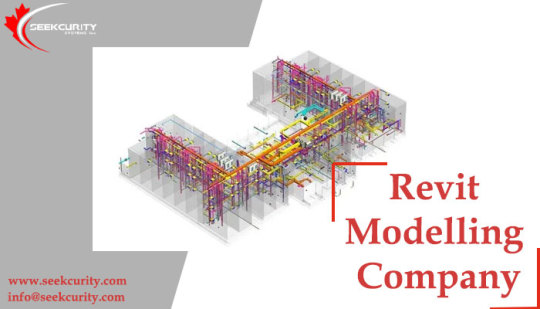
#BIM implementation Consultancy in Toronto#BIM Consulting and Outsourcing Services in Toronto#CAD Outsourcing Company in Canada#Interior Design BIM Consultancy in Canada#Plumbing BIM Modelling services in Canada
1 note
·
View note
Text
youtube
Chudasama Outsourcing's Training Session | CAD, BIM, Revit & Rendering.
Last Saturday, Chudasama Outsourcing conducted a training session for its new employees. During the session, detailed training was provided on CAD, BIM, Revit, and rendering software, covering all essential aspects. All employees actively participated, gaining valuable knowledge and skills to enhance their expertise.
#scan to bim services#point cloud to bim services#pdf to revit modeling services#pdf to cad conversion#Youtube
0 notes
Text
Top Architectural Scan to BIM Services | Accurate BIM & CAD Services
Looking for professional Architectural Scan to BIM services? We provide high-accuracy Architectural BIM Modeling and Scan to CAD services to transform point cloud data into detailed 3D models. Our expertise ensures precision, efficiency, and seamless integration into your architectural and construction projects. Whether you need BIM models for renovation, restoration, or new builds, our services guarantee high-quality results. Improve your workflow with our Scan to BIM and Scan to CAD services tailored to your needs.
#Architectural Scan to BIM#Architectural Scan to BIM services#Architectural Scan to CAD Services#Architectural BIM modeling service
0 notes
Text
The Evolution of Structural Steel Detailing: From CAD to BIM

The evolution of structural steel detailing software has transformed the construction industry, making processes more efficient, accurate, and collaborative. From the early days of Computer-Aided Design (CAD) to the modern era of Building Information Modeling (BIM), the journey has been remarkable, revolutionizing Structural Drafting Services and Structural Detailing Services worldwide. In the past, structural steel detailing was a labour-intensive process. Engineers and draftsmen relied on manual drafting techniques to produce Structural Steel Drawings. The introduction of CAD in the 1980s marked a significant leap forward. CAD software allowed structural drafting companies to create digital drawings with greater precision and speed, reducing the risk of human error and enabling quicker revisions. This was a pivotal moment for Structural Detailing Services, as it laid the groundwork for the modern workflows we see today. However, as construction projects grew more complex, the limitations of CAD became apparent. CAD was excellent for creating 2D drawings, but it lacked the ability to fully integrate with other aspects of construction, such as cost estimation, scheduling, and clash detection. This is where Building Information Modeling (BIM) entered the picture. BIM technology has taken Structural Detailing Services to the next level. Unlike CAD, BIM is not just a tool for drawing but a comprehensive platform that integrates all aspects of a building's lifecycle, from design and construction to operation and maintenance. BIM Services involve creating and managing digital representations of physical and functional characteristics of structures. This includes generating detailed 3D models that encapsulate every aspect of a building, from architecture to structural components and MEP (Mechanical, Electrical, Plumbing) systems. Popular BIM software used in Structural Steel Detailing Services includes: Autodesk Revit: A leading BIM software that allows users to design, model, and manage building information in 3D. Tekla Structures: Specialized in structural detailing, Tekla provides advanced tools for modelling and managing detailed structural components. Navisworks: Used primarily for project review, Navisworks enables the integration of 3D models for clash detection and coordination. Bentley Systems: Offering a range of BIM solutions, Bentley Systems provides tools for comprehensive infrastructure management and design. These tools not only facilitate the creation of detailed models but also allow for better coordination, visualization, and simulation of construction processes. Outsourcing BIM services offers several advantages, particularly for companies looking to enhance their Structural Drafting Services without investing heavily in in-house capabilities. Key benefits include: Cost Efficiency: Outsourcing reduces the need for significant capital investment in software and training, allowing companies to access top-tier BIM expertise at a fraction of the cost Access to Expertise: By outsourcing to specialized firms, companies can leverage the expertise of professionals who are up-to-date with the latest BIM technologies and best practices Scalability: Outsourcing provides flexibility in scaling services up or down depending on project needs, making it easier to manage workloads without the burden of maintaining a large in-house team Faster Turnaround: With a dedicated team working on BIM services, projects can be completed more quickly, allowing companies to meet tight deadlines and improve overall project efficiency Improved Collaboration: BIM enables seamless collaboration between different stakeholders, including architects, engineers, and contractors, ensuring that everyone is working from the same detailed, up-to-date model When it comes to outsourcing BIM services, Versasia Infosoft stands out as a trusted partner. With a team of highly skilled professionals and access to the latest Structural Detailing
Software, Versasia Infosoft offers comprehensive BIM services tailored to meet the unique needs of your projects. Versasia Infosoft specializes in providing high-quality Structural Steel Detailing Services, ensuring that your projects are executed with precision and efficiency. Whether you need detailed Structural Steel Drawings, clash detection, or 3D modelling, Versasia Infosoft delivers exceptional results that enhance the overall quality of your construction projects. By choosing Versasia Infosoft - Structural Drafting Company, as your BIM services partner, you gain access to cutting-edge technology, expert knowledge, and a commitment to excellence that will drive your projects to success. With a focus on collaboration, cost-efficiency, and timely delivery, Versasia Infosoft is the ideal choice for companies looking to stay ahead in the competitive construction industry. In conclusion, the transition from CAD to BIM has revolutionized Structural Drafting Services and Structural Detailing Services. With the right partner like Versasia Infosoft, you can leverage the full potential of BIM technology, ensuring that your projects are not only successful but also set new benchmarks in quality and efficiency. #Engineering Service #Steel Detailing #Structural Drafting #Structural Engineering #EngineeringService #SteelDetailing #StructuralDrafting #StructuralEngineering #BeststeeldetailersinIndia #BIMServices #caddraftingservices #engineeringservices #OutsourceStructuralEngineering #outsourcingbenefits #outsourcingengineeringservices #papertocadconversionservices #professionalsteeldetailers #steeldetailing #steeldetailingservices #structuralengineering #StructuralModelling #StructuralSteelDetailing #structuralsteeldrawings
#Best steel detailers in India#BIM Services#cad drafting services#engineering services#Outsource Structural Engineering#outsourcing benefits#outsourcing engineering services#paper to cad conversion services#professional steel detailers#steel detailing#steel detailing services#structural engineering#Structural Modelling#Structural Steel Detailing#structural steel drawings
0 notes
Text
Transitioning with Technology in AEC: From AutoCAD to BIM

CAD was introduced to ease the complexities of traditional practices. It was a powerful tool until BIM extended the services multiple benefits. Transform from AutoCAD to BIM for efficient and accurate construction projects. Continue reading to know the importance.
#cad to bim#cad to bim services#cad to bim conversion#cad to revit#cad to revit services#autocad to bim conversion#autocad to revit#pdf to bim#pdf to revit#pdf to bim services#pdf to 3d model#pdf to revit services#pdf to bim conversion services#cad to bim modeling services#cad to revit converter#autocad to bim services
2 notes
·
View notes
Text
Why UAE Contractors Are Turning to 4D BIM for Smarter Project Management
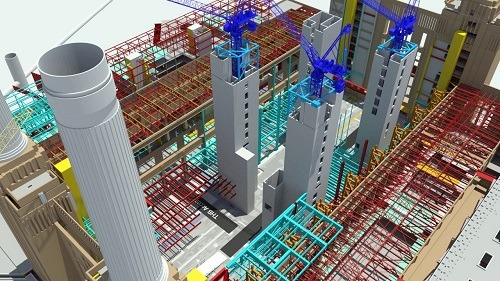
Among the current technology reworking the enterprise is 4D BIM in Construction UAE a powerful innovation that adds the size of time to traditional three-D Building Information Modeling.
#Bim Services Provider#Bim Service Providers In India#Architectural Bim Services India#Architectural Bim Modeling Services#Structural Bim Services India#Structural Bim Modeling Services#Bim Structural Modeling Services#Mep Bim Services#Mepf Bim Modeling Services#Infrastructure Bim Software#Infrastructure Bim Services India#4D Construction Sequencing#4D Bim Software#5D Quantity Take-Off#5D Bim Cost Estimation Quantity Take-Offs#Building Information Modelling 6D#7D Bim For Facilities Management#Point Cloud To Bim Software#Benefits Of Point Cloud Scan To Bim#Cad To Bim Modeling Services#Construction Tender Documentation#Construction Documentation Checklist#Cobie Buildings Designing#Facility Management Service Providers#Structural Precast Services India#Revit Fabrication Service India
0 notes
Text
Benefits of BIM Modeling in Modern Construction

Building Information Modeling (BIM) is a transformative approach in modern construction that leverages digital tools to improve efficiency, accuracy, and collaboration throughout the construction lifecycle. Here are several key ways BIM modeling helps in modern construction:
1. Enhanced Collaboration and Communication
Centralized Information Repository: BIM provides a shared digital space where all stakeholders, including architects, engineers, contractors, and owners, can access up-to-date project information.
Real-time Updates: Changes made in the BIM model are instantly visible to all parties, reducing misunderstandings and facilitating quicker decision-making.
Interdisciplinary Coordination: BIM integrates various disciplines into a single model, enhancing coordination and reducing clashes between structural, mechanical, electrical, and plumbing components.
2. Improved Visualization and Design
3D Modeling: BIM allows for the creation of detailed 3D models, providing a clear and comprehensive visual representation of the project.
Virtual Reality (VR) and Augmented Reality (AR): These technologies can be integrated with BIM to offer immersive experiences, enabling stakeholders to visualize the project in a more intuitive and engaging manner.
3. Increased Accuracy and Reduced Errors
Clash Detection: BIM software can automatically detect conflicts between different building systems (e.g., pipes running through beams), allowing for resolution before construction begins.
Detailed Documentation: BIM generates precise and consistent construction documents, reducing the likelihood of errors and omissions.
4. Enhanced Cost Management
Cost Estimation: BIM can provide accurate quantity take-offs and cost estimates, helping to manage budgets effectively.
Lifecycle Cost Analysis: It facilitates analysis of the total cost of ownership, including construction, operation, and maintenance costs.
5. Time Savings and Improved Scheduling
4D Modeling (Time): BIM incorporates the time dimension, allowing for the creation of construction schedules linked to the 3D model. This enables better planning and monitoring of project timelines.
Construction Simulation: It allows for the simulation of construction sequences, identifying potential issues and optimizing workflows.
6. Better Risk Management
Scenario Analysis: BIM enables the exploration of various scenarios and their impacts on the project, aiding in risk assessment and mitigation.
Regulatory Compliance: It helps ensure compliance with building codes and regulations by embedding rules and standards within the model.
7. Enhanced Facility Management
As-built Models: The BIM model serves as a comprehensive record of the completed project, useful for maintenance and operations throughout the building's lifecycle.
Asset Management: BIM aids in tracking and managing building assets, improving efficiency in facility management.
8. Sustainability and Energy Efficiency
Energy Analysis: BIM tools can perform energy analysis and simulations, helping to design buildings that are more energy-efficient.
Material Optimization: It aids in selecting sustainable materials and optimizing their use, reducing waste and environmental impact.
9. Improved Quality Control
Precision Construction: The detailed nature of BIM models enhances the accuracy of construction, ensuring that the project is built to specifications.
Ongoing Quality Assurance: BIM supports continuous monitoring and quality checks throughout the construction process.
Conclusion
BIM Modeling Services are a crucial asset in modern construction, offering significant benefits in terms of collaboration, accuracy, cost management, and overall project efficiency. By embracing BIM, the construction industry can achieve higher quality outcomes, reduced risks, and more sustainable practices.
#bim modeling services#outsource bim services#bim outsourcing services#revit modeling services#bim modeling service#outsourcing bim#3d bim modeling services#revit bim modeling services#revit modeling outsourcing services#bim outsourcing company#bim design outsourcing#cad to bim modeling services#revit outsourcing services#bim outsourcing companies in usa#revit family outsourcing services#pdf to bim modeling services#bim modeling outsourcing#outsource bim services india#bim outsourcing services in usa#revit services outsourcing#autodesk modeling outsourcing#revit modeling company#revit modelling services#bim outsourcing partner
0 notes
Text
0 notes
Text
HVAC Duct Layout Drawing | CAD 2D Construction Blueprint
Professional HVAC duct layout drawings and CAD 2D construction blueprints by DSR Designs. Ensure precision and reliability in your projects.
#3D Modeling#cad drafting services#bim modeling services#2d mechanical drawing#hvac duct layout drawing#mechanical engineering services#cad design services#mep bim services#mechanical design services#mep engineering services#engineering consulting services#clash detection services#bim service providers#shop drawings services
0 notes
Text

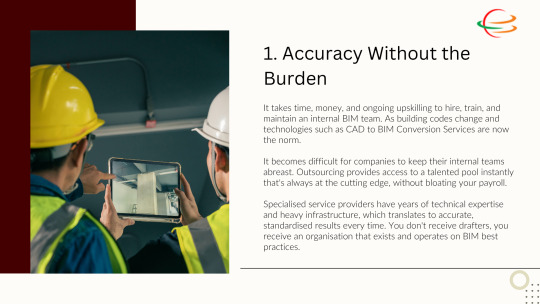
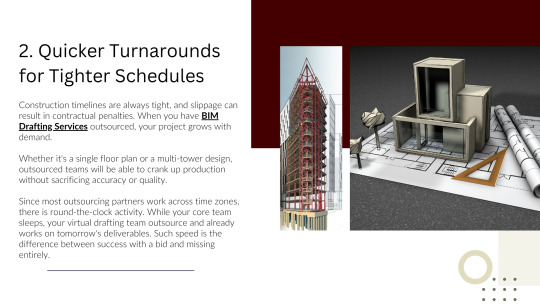
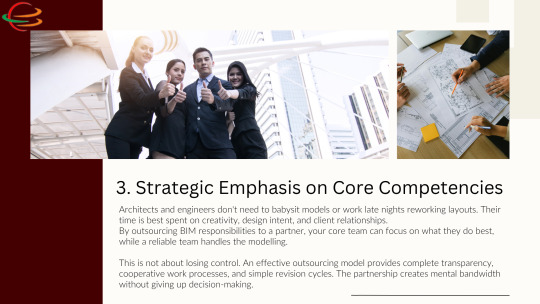
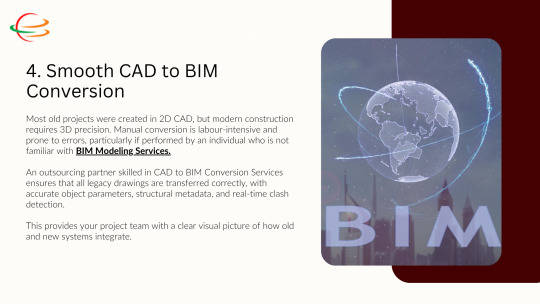
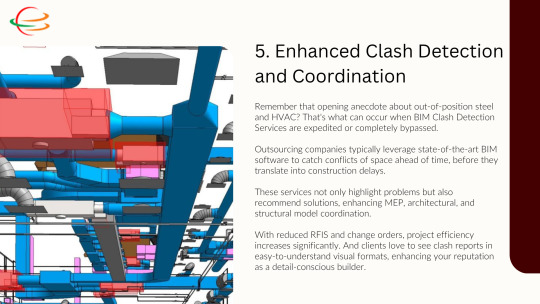
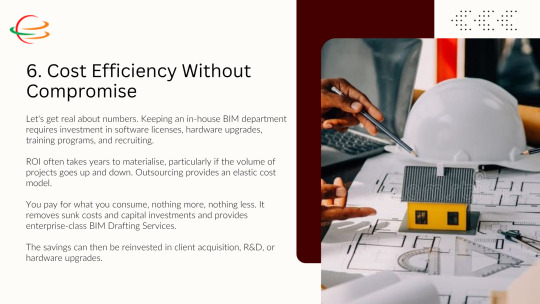

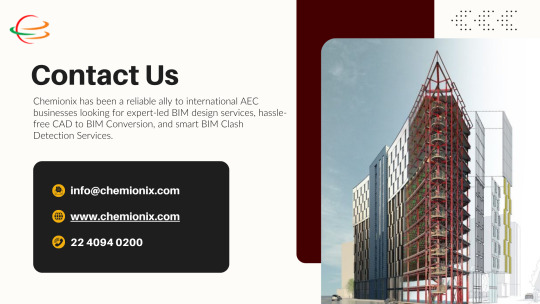
0 notes
Text
The Growing Importance of BIM Services in Modern Construction
BIM (Building Information Modeling) enhances project efficiency, accuracy, and collaboration. BIM modeling services, scan to BIM services, BIM outsourcing services, and BIM clash detection services made it easier for construction people to streamline their workflow and enhance project outcomes.
Here, architects, engineers, and contractors can perceive, analyze, and optimize building designs before the construction process starts.
What Are BIM Modeling Services?
BIM modeling services are expected to encompass the detailed and 3D development of representations of building projects. The models contain all the fundamental information, such as measurements, materials, and building components, making it easier to plan and execute the construction project. It also serves as a look into the lifecycle of a building from the design to demolition stages, where stakeholders can make informed decisions at each stage.
Teams can identify problems early in the process, and collaboration between architects, engineers, and contractors is simplified, which ultimately leads to fewer costly errors.
Scan to BIM Services: Digitizing Existing Structures
Scan to BIM or Point-Cloud to BIM services involves the application of 3D laser scanning technology to collect precise data of the physical space, which is then converted into a BIM model. Such models contain all the details of an existing building in all its structural elements, walls, and its mechanical systems.
Scan to BIM services is crucial when dealing with older buildings, whose documentation may be incomplete or old. This helps designers and engineers to come up with renovation or retrofitting plans.
BIM Outsourcing Services: Access Expert Talent
To most construction firms, outsourcing is the best cost benefit to accessing expert talent without maintaining in-house resources. BIM outsourcing services allow companies to outsource tasks such as modeling, drafting, and clash detection to specialized teams. Not only does this reduce costs, but it also enables construction firms to stay focused on core business activities while experts handle technical BIM aspects.
BIM services outsourcing can also help firms honor tight deadlines, improve the quality of the project, and take on more complex projects without a rise in staff. This flexibility holds special significance for smaller firms looking to keep their position in the competitive arena of a fast-changing industry.
Role of BIM Clash Detection Services
One of the main benefits of BIM is the ability to detect conflicts in building system clashes and correct them at the design stage. Detection of "clashes" or conflicts between structural, mechanical, electrical, and plumbing systems within a BIM model, for example, is performed by advanced software in BIM clash detection services. Before construction happens, finding clashes saves project teams from costly rework and delays.
With BIM clash detection services, many of the potential conflicts can already be visualized and resolved at the planning stage, thus setting up constructions for even smoother processes and lowering the risk of project overruns.
The incorporation of BIM modeling services, scan to BIM services, BIM outsourcing services, and BIM clash detection services has, therefore, driven the change in the construction industry. Increased accuracy of projects, cost-cutting, and efficient collaboration of teams are some the result benefits that come from the incorporation of BIM technologies in the construction arena. Construction professionals can deliver quality projects on time and on budget with the use of BIM technologies.
#BIM Modeling Services#BIM Clash Detection Services#BIM outsourcing services#Scan to BIM services#cad solution#3d cad solution#indovance inc
0 notes